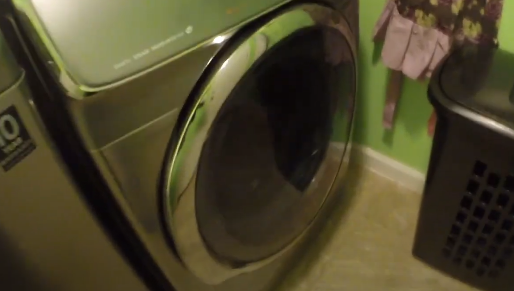Dryers are essential household appliances designed to remove moisture from your laundry, making it more comfortable to wear and reducing the time it takes for clothes to dry naturally.
However, if your dryer is taking multiple cycles to dry your clothes, it can be a frustrating and time-consuming issue.
This guide seeks to provide you with 15 possible fixes to this common problem, ensuring your dryer is running efficiently and effectively, and thereby extending the appliance’s lifespan.
Dryer Taking Multiple Cycles to Dry

1. Restricted Airflow
Restricted airflow is a common culprit when a dryer takes multiple cycles to fully dry your clothes.
This issue typically arises when the dryer’s venting system becomes clogged with lint or debris, limiting the amount of hot air that can escape from the appliance.
As a result, the dryer struggles to reduce moisture levels within the drum, necessitating additional cycles to fully dry laundry.
Fix
To remedy this, it’s essential to regularly clean the dryer vents and ensure the exhaust path is clear, enhancing the efficiency of the machine and reducing drying times.
2. Defective Heating Element
A defective heating element can cause your dryer to take multiple cycles to dry.
The heating element is a crucial component that heats the air before it’s directed into the clothing drum.
If it’s not working properly, the dryer won’t heat up sufficiently, resulting in damp clothes even after a full cycle.
Fix
One possible solution is to test the heating element using a multimeter for continuity.
If the heating element is defective, it will need to be replaced.
It’s recommended that you hire a professional to fix this issue to ensure safe and proper handling.
3. Clogged Lint Filter
A clogged lint filter is a common culprit behind a dryer taking multiple cycles to dry.
Over time, lint and other debris from the clothes accumulate on the filter, significantly reducing the dryer’s efficiency.
Not only does it hinder the free flow of hot air, but it also poses a risk of fire.
Fix
The solution is simple and straightforward. Before and after each drying cycle, make a habit of removing and cleaning the lint filter.
Regular maintenance ensures optimal airflow and enhances the overall performance and lifespan of the dryer.
4. Damaged Air Duct
A damaged air duct is a prominent cause of a dryer taking multiple cycles to dry.
Often, obstruction or damage in the air duct restricts the flow of hot air, decreasing the dryer’s efficiency and leading to damp and cold clothing even after a full cycle.
Fix
To rectify this problem, it’s crucial to conduct regular checks and cleaning of the air duct.
If damage is detected, immediate repair or replacement should be taken up.
Employing a professional service for thorough inspection and maintenance can ensure the optimal performance of the dryer.
5. Broken Thermostat
A faulty thermostat in a dryer could be the reason your clothes are taking multiple cycles to dry.
The thermostat is responsible for regulating the temperature within the dryer, and if it’s not functioning properly, it could prevent the machine from reaching the necessary heat level to dry clothes efficiently.
Fix
In such cases, the solution lies in replacing the malfunctioning thermostat. It’s advisable to hire a professional to handle this task, as it involves handling complex components of the appliance and can be risky if not done correctly.
6. Faulty Timer
The timer on a dryer is an integral component that governs the operating time of various cycles.
If it malfunctions, the dryer might take longer than usual to dry your clothes, necessitating multiple cycles.
Timer complications may result from a myriad of issues, such as worn-out knob or internal circuit problems.
Fix
As a remedy, it’s highly recommended to consult with a professional appliance repair technician.
Their expertise will ensure accurate diagnosis and safe, effective repair, restoring your dryer to optimum performance.
7. Worn Out Drum Seals
Drum seals are critical components in your dryer, ensuring hot air is efficiently retained within the drum.
Over time, these seals can wear out, leading to heat leakage and consequently, longer drying cycles.
A worn-out drum seal could be the culprit if your dryer is taking multiple cycles to dry.
As the hot air escapes, the dryer struggles to maintain the optimal temperature for drying clothes.
Fix
The solution is fairly straightforward – simply replace the worn-out drum seals.
Although this task might seem daunting, with proper guidance and tools, it’s a manageable DIY project.
Alternatively, you can always seek help from a professional appliance repair service.
8. Inefficient Motor
An inefficient motor can often be a culprit when your dryer takes multiple cycles to complete a single drying task.
Over time, the motor may lose its efficiency due to wear and tear, leading to a decrease in the tumbling speed.
This reduced tumble speed, in turn, lengthens the drying time, causing the dryer to run multiple cycles to dry your laundry completely.
Fix
A practical solution to this issue would be to get the motor inspected by a professional.
If it is deemed inefficient, you may need to consider replacing the motor to restore the dryer’s full functionality.
9. Damaged Drive Belt
One common reason your dryer may take multiple cycles to dry is a damaged drive belt.
This component is crucial as it allows the drum to turn and circulate air within the appliance.
A worn or broken belt will impede this movement, leading to inefficient drying.
Fix
If you observe that the dryer runs, but the drum does not spin, it’s likely the drive belt is at fault.
In such cases, the solution is to replace the damaged belt with a new one – a task that is relatively simple and can be accomplished by following the manufacturer’s instructions or calling a professional appliance repair service.
10. Incorrect Dryer Settings
Problems with your dryer might not always indicate a mechanical issue.
Sometimes, the cause is as simple as improper settings. Using low heat for a load that requires high can result in clothes not being dry after a cycle.
Similarly, overloading the dryer can restrict the flow of heat and air through the clothes, leading to multiple cycles for complete drying.
Fix
The solution is rather straightforward: ensure you’re using the correct heat setting for each load and avoid overloading.
Understanding your dryer’s settings and capacity can greatly enhance its efficiency and longevity.
11.Overfilled Machine
An overfilled machine can significantly impede your dryer’s efficiency, often requiring multiple cycles to thoroughly dry your clothes.
When the dryer is packed to capacity, hot air is unable to circulate freely, leading to damp clothes at the end of the cycle.
Fix
The solution is straightforward – avoid filling the dryer to its maximum.
Instead, load your dryer to about 75% of its capacity, ensuring sufficient space for hot air to circulate, thereby enhancing the efficiency of the drying process.
12. Unbalanced Load
An unbalanced load can significantly impact the efficiency of your dryer, often resulting in multiple cycles to fully dry your clothes.
This typically occurs when the weight of the laundry is not evenly distributed in the drum, causing the dryer to struggle to rotate and effectively circulate heat.
Fix
To resolve this issue, make sure to evenly distribute your laundry in the drum before starting the dryer.
For large items like blankets or towels, try to dry them separately or with similar items to maintain a balanced load.
This simple adjustment can greatly enhance the performance of your dryer and reduce the need for multiple drying cycles.
13. Damaged Blower Wheel
A damaged blower wheel in your dryer inhibits effective air circulation, leading to prolonged drying cycles.
The blower wheel works in tandem with the drive motor, pushing air through the drum and out the exhaust vent.
When the wheel is damaged or obstructed, it can’t perform this function efficiently, resulting in damp clothes even after multiple cycles.
Fix
Addressing this issue typically involves replacing the faulty blower wheel.
Before undertaking this task, ensure your dryer is unplugged and consult the user manual or a professional if necessary, to avoid any potential risks.
14. Inappropriate Vent Material
The use of inappropriate vent material could be a contributing factor if your dryer requires multiple cycles to dry your clothes.
Often, people select venting materials based on price or convenience, neglecting the impact on the dryer’s efficiency.
Plastic or vinyl materials, though cheap and flexible, can easily trap lint and are more susceptible to crushing or kinking, leading to blockages and reduced airflow.
Fix
The optimal solution is to replace these with smooth, rigid metal ducts.
They facilitate better airflow, are less prone to accumulating lint, and are more fire-resistant, enhancing both the efficiency and safety of your dryer.
15. Ambient Room Temperature Too Low
The efficiency of your dryer can be significantly impacted by the ambient room temperature.
If the room where the dryer is situated is too cold, it could take longer for your clothes to dry, necessitating multiple cycles.
Dryers work by heating air to remove moisture from your clothes, and when the surrounding environment is cold, the dryer has to work harder to achieve the necessary temperature.
Fix
A potential solution is to ensure your laundry room maintains a moderate temperature, ideally above 50 degrees Fahrenheit.
You can achieve this by adequately insulating your laundry room or using a space heater during colder months.
Conclusion
A dryer taking multiple cycles to dry clothes is not only time-consuming but also energy inefficient, leading to increased utility costs.
The root cause could be as simple as a clogged lint filter, or as complex as a malfunctioning heating element.
Regular maintenance and prompt repairs can significantly improve your dryer’s efficiency and longevity.
Always consult with a professional if you’re unsure about performing these tasks yourself to avoid potential mishaps. Remember, an efficient dryer is key to an effective laundry routine.
FAQs
Why is my LG dryer taking multiple cycles to dry?
Your LG dryer might be taking multiple cycles to dry due to a blocked exhaust vent, affecting air circulation, or a faulty heating element.
How long should a dryer take to dry?
A dryer should typically take about 30 to 45 minutes per cycle to thoroughly dry a standard load of laundry. However, the exact duration can vary depending on the type and volume of the clothes.
Why is there a less dry setting on my dryer?
The ‘less dry’ setting on your dryer is designed for delicate fabrics that require less heat, helping to prevent damage and shrinkage.
How many drying cycles?
A standard dryer usually has at least two drying cycles: a regular or heavy-duty cycle for cotton and an air dry or fluff cycle for delicate items.
However, newer models may feature multiple specialized cycles for different fabrics and drying needs.
Why Is My New Whirlpool Washer So Loud
Why Do Clothes Get Stuck Under Agitator
Beko Washing Machine Problems Reset
Bosch Washing Machine Tap Symbol Flashing
Washing Machine Not Getting All Clothes Wet
Whirlpool Washer Not Agitating Properly
GE Washer Clicking Noise During Agitation
Whirlpool Washer Won’t Agitate but Will Spin
Whirlpool Washer Locked Light Flashing
Samsung Washing Machine vs Ifb
Front Load Washer Filling With Water When Off
Why Is My Amana Washer Stuck on Wash Cycle
Kenmore Washer Lid Lock Flashing


